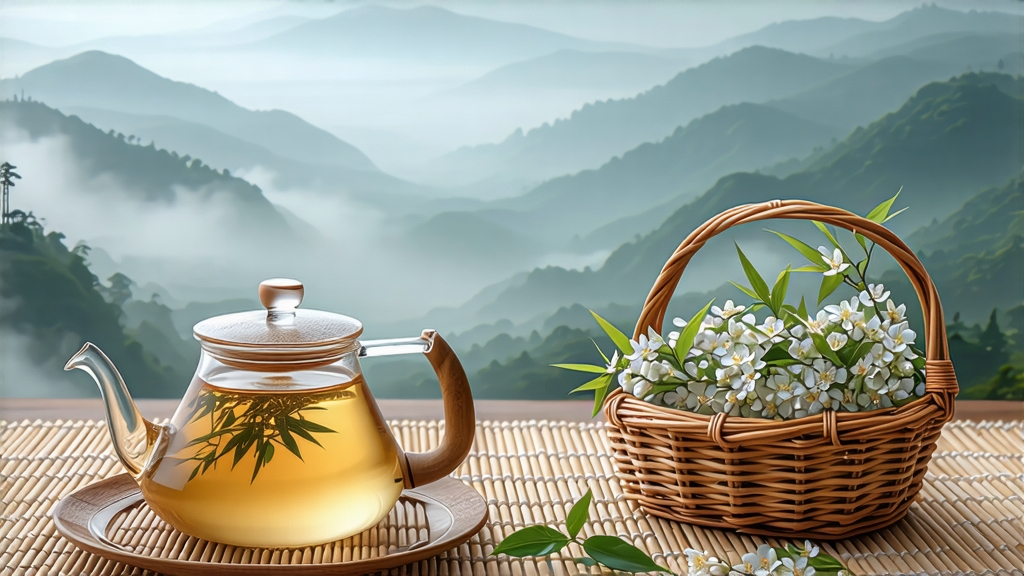
Among the six great families of Chinese tea, white tea is the quietest child, and within that hush Bai Hao Yin Zhen—literally “White Hair Silver Needle”—is the whisper you strain to hear. First recorded in the 1796 Daoguang-era gazette of Fuding County, Fujian, the tea was originally a tribute so precious that only the youngest, still-furled buds of the Da Bai cultivar were plucked, carried in bamboo baskets lined with paper, and rushed to the capital by relay riders. Court physicians praised its “cool nature,” prescribing it for fever and inflamed eyes; poets compared its liquor to “liquid moonlight,” a phrase that still graces export cartons today.
Silver Needle is not a generic style but a legally protected origin product. Authentic leaf must come from either Fuding or the neighboring county of Zhenghe, both perched on the subtropical slopes of the Wuyi cordillera where red granite soils, 1600 mm of annual mist, and a diurnal swing of 10 °C coax the tea bush into storing amino acids in its apical buds. Within this micro-region, two genetically distinct cultivars are permitted: Fuding Da Bai, whose buds can reach 3.5 cm and shimmer with a silver duvet of trichomes, and the slightly stockier Zhenghe Da Bai, which gives a rounder, more apricot-toned cup. Purists can taste the longitude: Fuding liquor is limpid bamboo-shoot sweet, while Zhenghe leans toward dried longan and warm hay.
Making Silver Needle is an exercise in disciplined restraint. Picking begins at dawn on the first flush, when the bud is still closed like a grain of rice and the ambient humidity hovers around 75 %. A seasoned plucker can gather only 500 g of fresh buds in a day—roughly 2,000 individual tips—which will shrink to 100 g after the dual stages of withering and desiccation. The buds are spread one layer deep on bamboo trays stacked inside a sun-warmed corridor called a “qing fang.” For 36 to 48 hours they are left to the mercy of mountain breeze and diffused light, losing moisture in slow motion while endogenous enzymes convert lipids into floral volatiles such as linalool and geraniol. No pan-firing, no rolling, no shaking—just the whisper of air and the watchful eye of the tea master who turns the buds every hour to ensure even withering. When the bud stem snaps cleanly, the moisture has fallen to 10 % and the tea is ready for a final 15-minute bake at 60 °C, just enough to fix the aroma without caramelizing the leaf.
The resulting needle is a pale arctic spear covered in microscopic hairs that refract light like frosted glass. When brewed, these hairs rise and drift, creating a shimmering “silver rain” before settling into a heap of down at the bottom of the glass. Because the leaf is intact and unbruised, oxidation is arrested at the most nascent stage, yielding a liquor that is the color of early morning chardonnay with a viscosity that clings to the lips like light honey.
To unlock this quiet drama, water is everything. Begin with still spring water low in minerals; aim for 75–80 °C, just below the first bubble. Pre-warm a tall cylindrical glass or a gaiwan of 120 ml; use 3 g of tea—about two heaping teaspoons—then pour the water in a high, thin stream so the needles tumble like snowflakes. The first infusion should last no more than 60 seconds; subsequent steeps can stretch to two, four, even six minutes as the bud slowly surrenders its essence. A proper Silver Needle will deliver at least five brews, each revealing a different octave: the opening steep is crisp melon and cucumber skin; the second, honeysuckle and fresh cream; by the third, a faint note of pine sap appears, followed by a lingering sweetness the Chinese call “huigan,” a cool sensation that blooms at the back of the throat minutes after the cup is empty.
Professional cupping follows a quieter choreography. Place 3 g in a 150 ml white porcelain tasting set, infuse for five minutes with 85 °C water, then decant completely. Evaluate the dry aroma first: it should suggest wet pebble, art